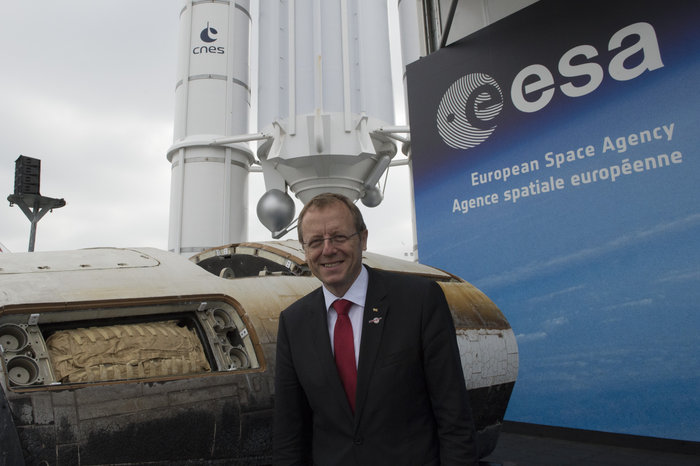The director general of the European Space Agency (ESA), Johann-Dietrich Woerner, has suggested that a village should be built on the far side of the Moon as a replacement for the International Space Station (ISS).
In our genes there is something beyond just practical applications. We like to discover, to pioneer – this is humankind and this is what brings us into the future– Johann-Dietrich Woerner, European Space Agency
In an interview with the BBC, Woerner said the ESA “should look to the future beyond the ISS”. He said the village “shouldn’t just mean some houses, a church and a town hall. This Moon village should mean partners from all over the world contributing to this community with robotic and astronaut missions and support communication satellites”.
Woerner said the far side of the Moon would be an ideal location for because it could combine lunar science and the construction of a telescope to look “deep into the universe”.
“The Americans are looking to go to Mars very soon – and I don’t see how we can do that – before going to Mars we should test what we could do on Mars on the Moon.
The project is just a concept at present, with no explicit plans or funding.
At present any lunar construction project is well beyond the means of the ESA: the agency has an annual budget of $4.8bn whereas the cost of the US Apollo space programme was about $150bn in 2015 dollars.

Professor Johann-Dietrich Woerner (ESA)
However, BBC Future asked experts to predict the course of space exploration over the next decade, and they were unanimous that humans would go back to the Moon.
No humans have set foot on the Moon since Apollo 17 astronauts Gene Cernan and Harrison Schmitt departed in December 1972.
In 2013 the Chinese Chang’e mission landed the Jade Rabbit robot on the moon. After this, a mission to bring samples of lunar soil back to Earth is planned for 2017 followed by a crewed mission in the 2020s.
In 2013, the ESA was testing the feasibility of using 3D printing to build a lunar base on the moon.
Woerner was unanimously appointed as the ESA’s Director General in December last year, for a period of four years.










